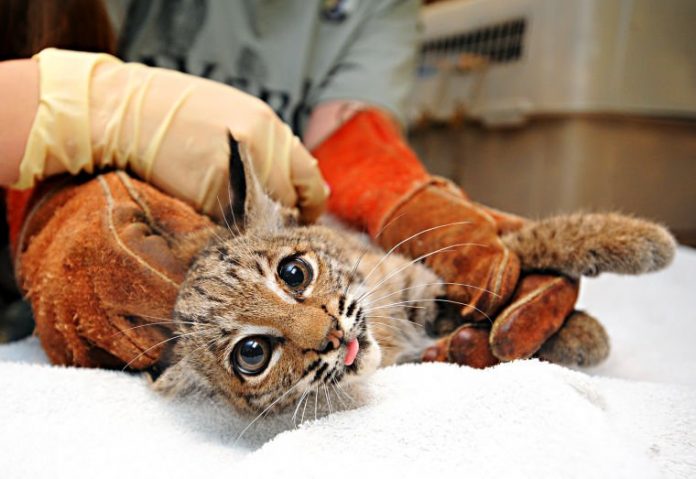
Californians, and perhaps South County residents in particular, should be aware of all the clawing going on in bobcat politics, and speak up before as many as 1,200 more are trapped for their beautiful, spotted pelts—most sold in China and Russia.
South County is home to one of the state’s premiere bobcat rescue groups, the Wildlife Education and Rehabilitation Center (W.E.R.C.) in Morgan Hill founded by Sue Howell decades ago.
Over the years, its volunteers have pioneered methods of caring for injured, sick and orphaned bobcats—such as teams of human surrogate mothers dressed in full-body bobcat costumes.
At W.E.R.C., they know the bobcat’s importance in keeping nature’s balance. The animal feeds mostly on rodents, including ground squirrels that wreak havoc on farm and pasture lands.
When the California Department of Fish & Wildlife (DFW) needed a protocol to instruct rescue groups statewide in bobcat care, it turned to W.E.R.C. In January 2003, that protocol, titled Procedures for Bobcat Rehabilitation, was ready and adopted. Its pages are filled with instruction in bobcat health care, bobcat diet, the orphaned bobcat and bobcat restraint. It has the voice of experience, dedication and compassion.
Along with like-minded Californians, the folks at W.E.R.C. delighted on August 5 when the California Fish & Game Commission voted to ban the trapping of bobcats for their fur. More than 55,000 Californians had signed petitions or written letters in support of the ban.
It seemed the commission was finally in step with what’s going on around the globe: people are in increasing numbers demanding a halt to killing wildlife for no reason other than sport or pelts or trophies.
So, on Aug. 5, everyone believed the ban was a done deal. It was not.
Citing bureaucratic requirements, the DFW, which carries out commission rulings, stunned animal welfare groups when it announced the ban couldn’t start until November 2016.
That means during the coming trapping season, Nov. 25–Jan. 31, upwards of 1,200 bobcats will be trapped and killed and their pelts ripped from their flesh. And for what?
When the ban was announced, Nicole Paquette, vice president of wildlife protection for The Humane Society of the United States said this:
“In the wake of the tragic death of Cecil the lion, the public has never been more aware that killing an animal for its pelt is no worse than for a head and hide to decorate a trophy room. This decision is a much-needed step in the right direction . . . to protect California’s bobcats from this cruel and unnecessary practice.”
So why, now, does the DFW seem intent on allowing one more killing season? Perhaps because of pressure from the hunting and trapping industries?
The ban was enacted and so it’s in force, right? The question is up in the air and animal rights folk are asking the public to respond by writing to the DFW to demand that the ban go into effect immediately, as everyone expected.
In a Letter to the Editor of the Dispatch, Eric Mills of Action for Animals in Oakland said allowing one more season of trapping is “not acceptable!”
We agree. It’s bad enough that California still allows the hunting of bobcats. It’s far worse, and pointless slaughter, to allow another season of trapping when the ban has been ordered.
If you have an opinion, you can write to Chuck Bonham, DFW director, c/o Resources Building, 1416 Ninth St., Sacramento CA 95814, or email di******@*********ca.gov, or phone him at (916) 445-0411.












